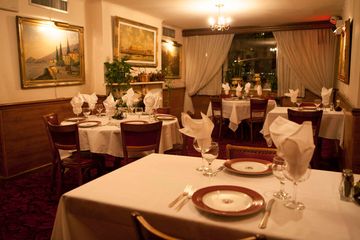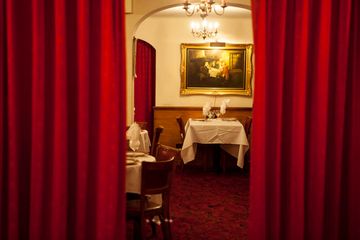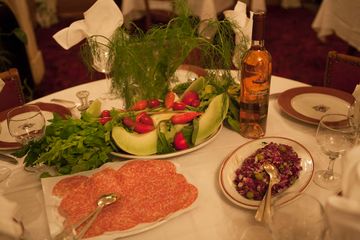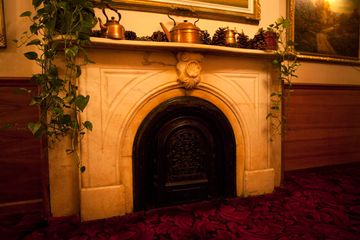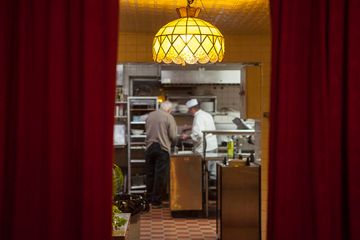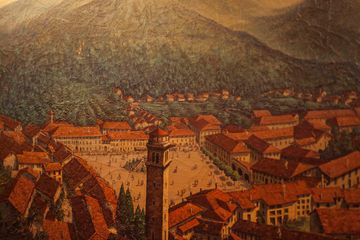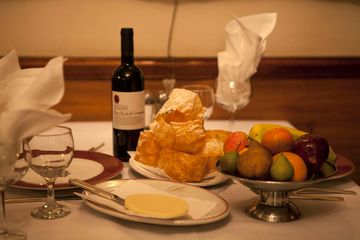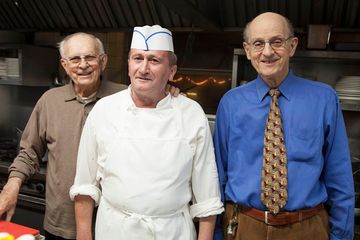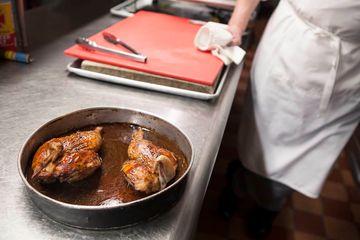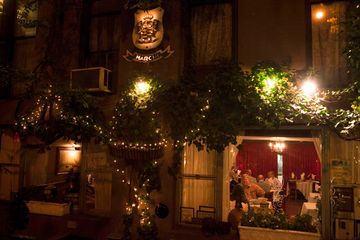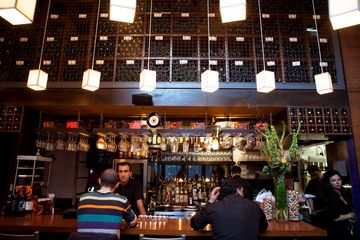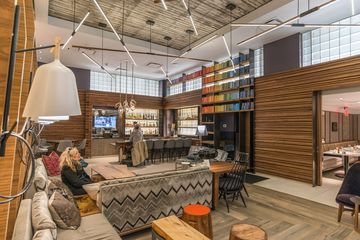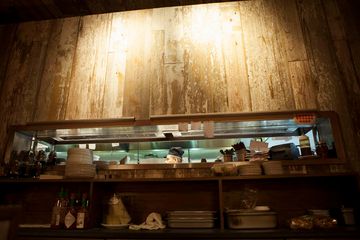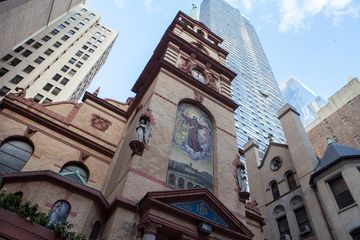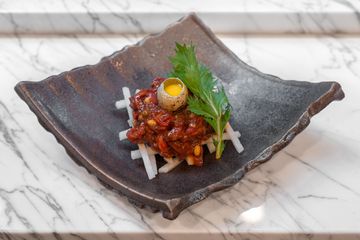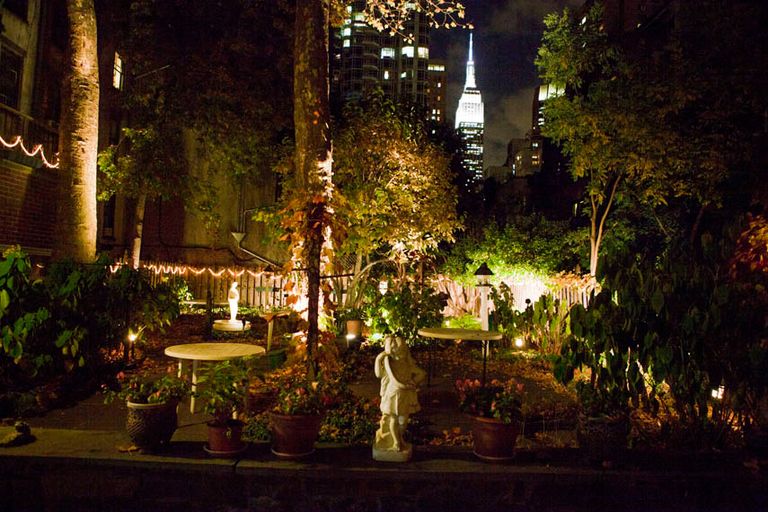
My first apartment after getting married was in Kips Bay, and each anniversary for five years after, my husband's parents took us to dinner at Marchi's. It had been a long time since I had eaten my last meal there, but as soon as I walked in the door, the memories came flowing back. Nothing much has changed, even the menu remains the same as it was some thirty years ago. What I never experienced in the '80s, though, was getting to spend quality time with two of the brothers, Mario and John (Robert was not there). I was treated to a full tour of the multiple rooms, the wine cellar, and, my favorite, the kitchen, where I got to chat with Biondo, the chef from Kosovo who has been a member of the Marchi family for twenty-five years.
Perhaps the most fascinating aspect of walking the side streets is learning the history behind a business. Although I do not always share all of the details on the site, this particular story is worth documenting. I believe I took Mario on a walk down memory lane that he had not ventured on in quite some time, but once I got him started he kept going...and what he could not recall, his kind wife, Christine, was able to fill in the blanks.
Lorenzo Marchi, Mario's father, left Italy to come to New York in 1927, and had his wife, Francesca, join him a year later. They found a place to live on 31st Street, and became the superintendents of their building. Both husband and wife had day jobs, but when they returned in the evening, they would always cook an Italian meal. One of the other tenants in the building could not resist the aroma emanating from downstairs, and one day he offered to pay the couple if they would cook for him, too. Little by little, he would bring his friends, paying Lorenzo fifty cents a meal. The menu would vary, as whatever they were making for themselves that night, this is what they would serve their guests. By 1930, a business had begun to unfold. The Marchi's purchased the building and opened their first restaurant a few years later at the same address it is today. Over the years, as Christine told me, "when most women were out buying dresses, my mother-in-law was purchasing property." Today, they own several of the townhouses lined up along 31st Street and the restaurant has expanded into each of them. Much of the original details are still apparent, including the brick on the ceiling. Christine went on to tell me, "We would not be here today, eighty plus years later, if we didn't own the buildings. Who could afford this now?"
"Family style" dining has always been the way a meal is served at Marchi's. Everyone begins with a large antipasto platter. Following this comes the famous lasagna. It is remarkable to think that the pasta dish that Mario's father first cooked is the same "secret" recipe that he uses today. According to Christine, "only Mario has the patience to make this - it takes four days to prepare." Deep fried fish or sauteed chicken livers, string beans and beets are next, and then continuing on, both roast chicken and veal are brought to the table alongside a bowl of mushrooms and salad. Dessert always consists of fresh fruit, cheese, a lemon fritter, and my favorite, "Crostoli," twisted fried dough sprinkled with powdered sugar. Besides Thanksgiving, when the Marchi's serve turkey, this menu has remained exactly the same many, many decades later.
For me, the piece de resistance is the hidden terrace. Dressed up like a magnificent garden in Tuscany, diners can savor their meal outdoors in the warmer weather, but while one can imagine being in Italy, the backdrop is a view of the grand, beautifully lit, Empire State Building.
